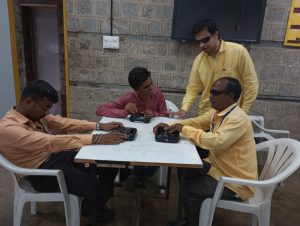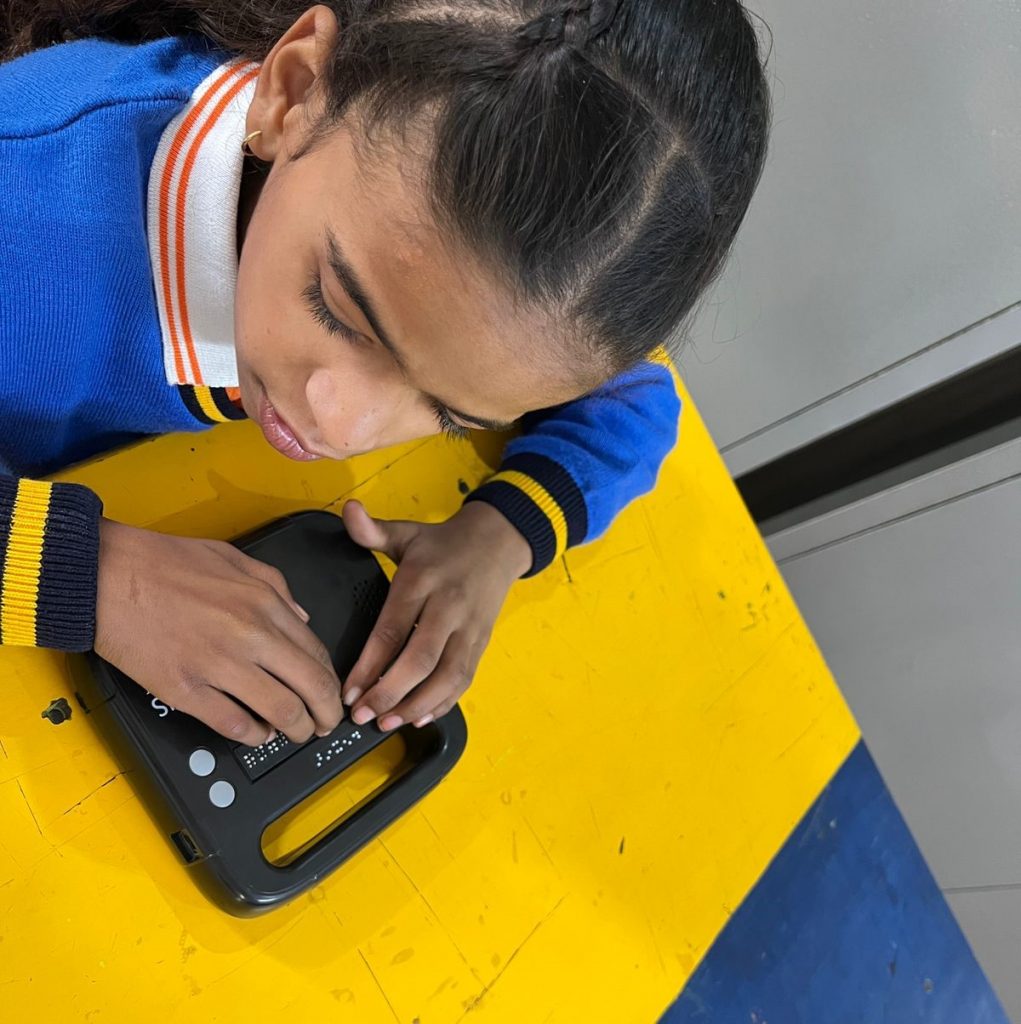An Indian company is breaking down the barriers in education through their refreshable Braille device
Braille is a widely used method in schools for those who have blindness or low vision. But even though children learn Braille, they often do not have enough available reading materials in Braille. To produce Braille documents, schools need to have a device called a Braille Embosser, special paper for printing, and software to translate text to Braille. In global south countries like India, these items are usually too expensive, which results in cases such as school children having only one or two copies of text books and nothing else. In India, there are little to no reading materials in their native languages or for extra reading, such as stories. This leads to poor reading skills, affecting their future education and eventually, the workplace.
Refreshable Braille Readers are one way to address this problem. However, they are costly, hard to take care of, and not appropriate for children. They usually have 10-14 keys, multiple functions and are too complicated for young children to learn and use.
Hexis is a simple Braille Reader from Vembi Technologies, a Bengaluru-based company. It has just 4 keys and is easy to learn and use. Vembi discovered that children can learn Hexis in 10 minutes and use it right away. The device also has a cloud based software platform, called Antara, that turns text to Braille automatically for students to download and read.
Thus, Hexis removes the need for costly Braille Embossers, special paper and conversion software. It makes any text content available in seconds, but equally allows sighted teachers who might not know Braille to create a more inclusive educational experience.
As one teacher describes the experience “In recent times, while there are numerous materials available for sighted children, blind children only had Braille paper to learn. The device allows us to easily convert any text into Braille format, push the content into the device, and read it. The notable advantage is that Braille dots don’t get erased, unlike on Braille paper where children can read only a few times before the dots start to fade. This device functions like a book, allowing children to read as many times as they want and learn.” – Bhagya, Sri Siddaganga School for the Blind

Part of an AI for Accessibility grant, Vembi created, built, and delivered 100 Hexis to various schools. The devices were welcomed by the student and teacher community, who were especially eager to make school reading materials quickly.
Vembi launched a program called Baseline in partnership with Vision Empower. The organizations understood that providing devices and textbook content is insufficient, as braille reading skills vary a lot among children. Vision Empower has implemented a program to assess braille literacy on a 1-5 scale and create a program to help students advance to the next level.
As one student explains “We are able to read books in Hexis, and we can also remember spellings, which is not possible with our screen reader, because we are more focused on listening. In Hexis we can read and focus on spelling and vocabulary. Good thing is that you will also provide content for us to read, so it will be good for us to read and improve.” – Pari, Saksham School, Noida
The team is working on more enhancements in this field, such as transforming more textbooks and creating a library where any child in India request and access books they want in Hexis.
“Hexis is very useful. I like all the stories in Hexis, may it be English or Kannada. – Mahesh, Grade 8, JSB School Ramanagara”.








